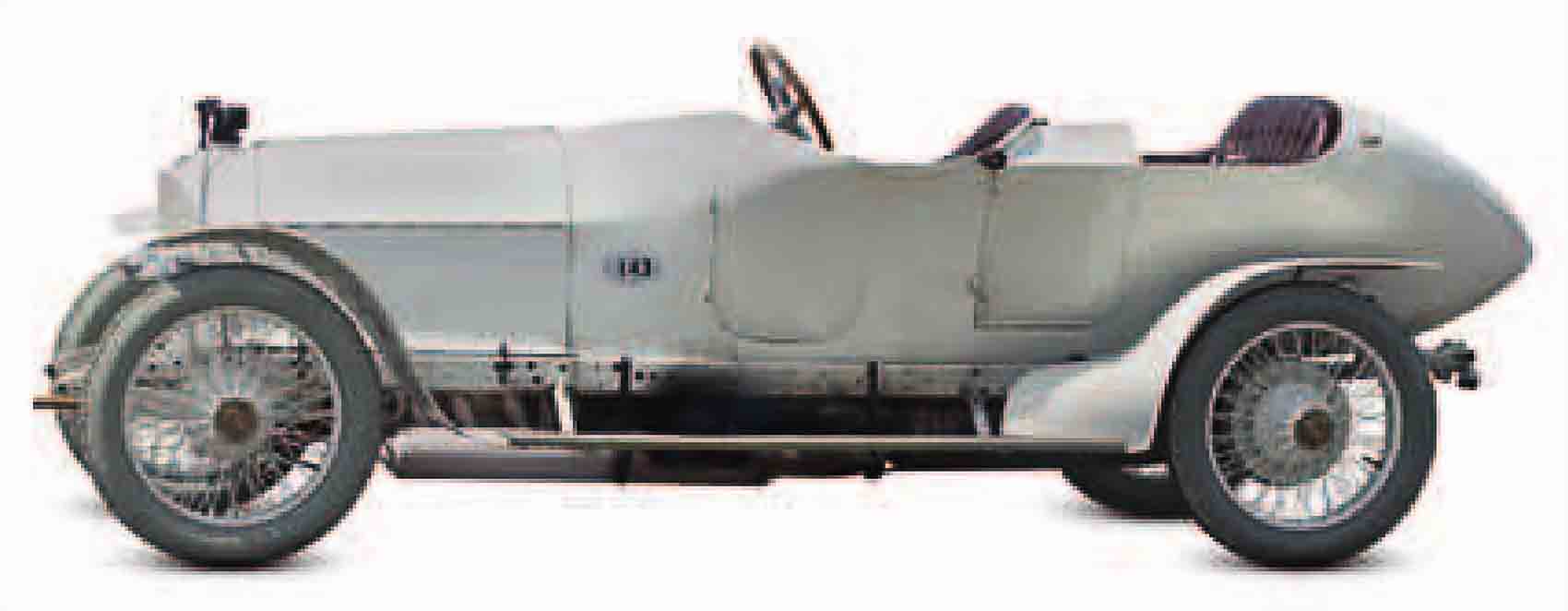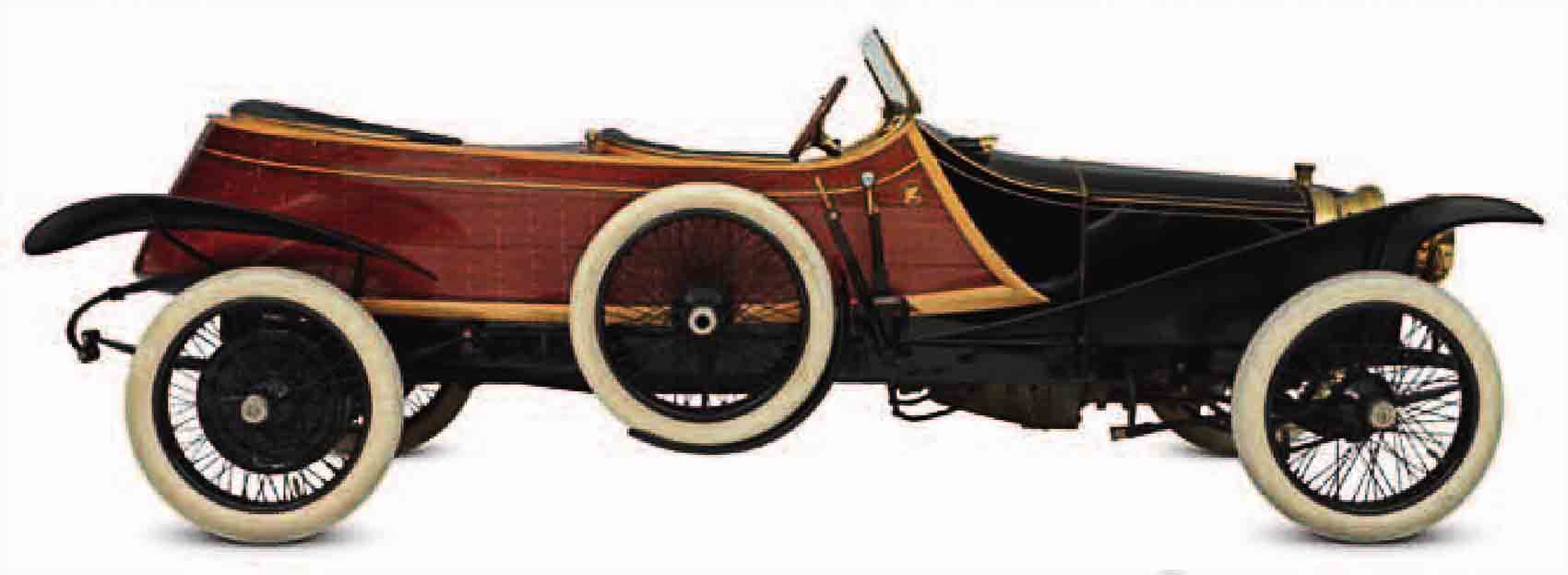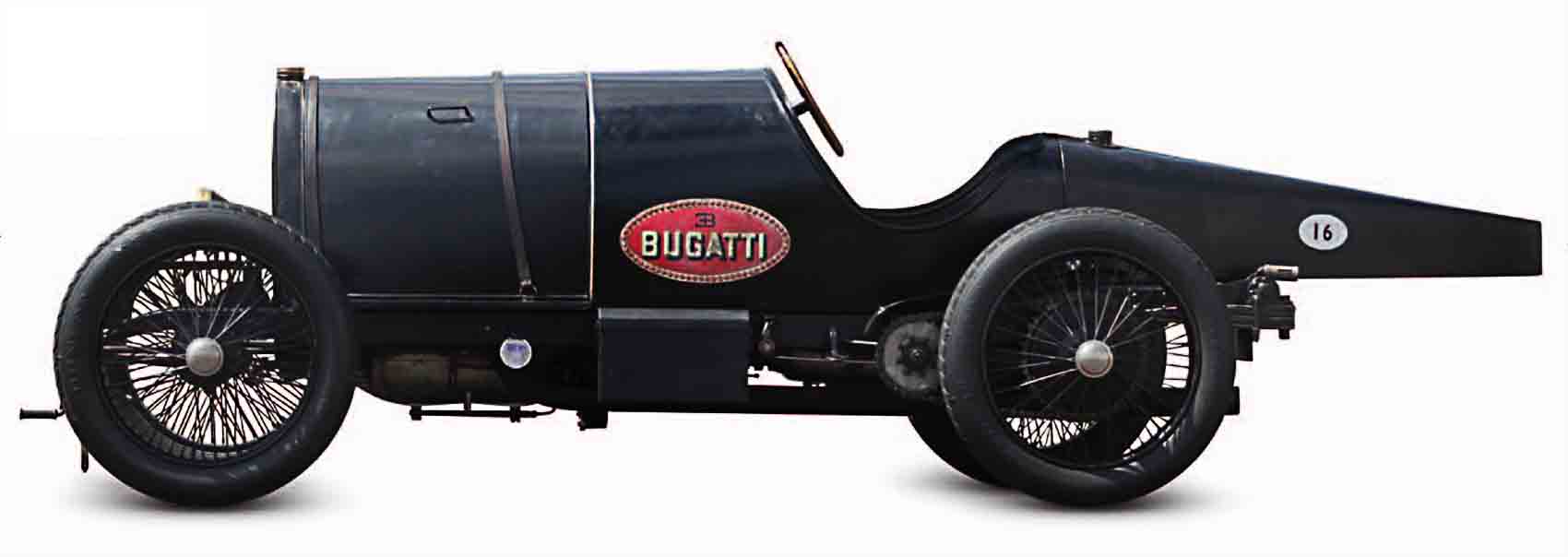
Birth of the Competition Car
The idea of proving the speed and durability of new cars by pitting them against each other—in long-distance trials, hill climbs, or circuit races—came early in the history of the motorcar. By the end of the first decade of the 20th century, motor sport was thriving throughout Europe and the United States, with German, French, Italian, British, and American cars leading the field. In the absence of restrictions on engine capacity, many cars of this era had mammoth engines.
Napier Gordon Bennett, 1902

| Origin | UK |
| Engine | 6,435 cc, straight-four |
| Top speed | 70 mph (113 km/h) |
he sole British entrant in the 1902 Gordon Bennett Trial, this Napier, driven by S.F. and Cecil Edge, won. Its color became known as British Racing Green.
Spyker 60hp, 1903

| Origin | Netherlands |
| Engine | 8,821 cc, straight-six |
| Top speed | 80 mph (129 km/h) |
The Spijker brothers, Jacobus and Hendrik-Jan, pioneered magnificent cars, most notably this first production six-cylinder with permanent four-wheel drive and four-wheel brakes.
Auburn Model 30L Roadster, 1910

| Origin | USA |
| Engine | 3,300 cc, straight-four |
| Top speed | 65 mph (105 km/h) |
Auburn built 1,623 cars in 1912. The 30L was sold as a sedan, tourer, and roadster using a Rutenber engine with individually cast cylinders. The Roadster was the least expensive, at $1,100.
Darracq 12 hp “Genevieve”, 1904

| Origin | France |
| Engine | 1,886 cc, straight-two |
| Top speed | 45 mph (72 km/h) |
Darracqs were capable cars with light, pressed-steel chassis, but this one is most famous for its starring role in the 1953 comedy film Genevieve, which popularized veteran cars.
Darracq 200hp, 1905

| Origin | France |
| Engine | 25,400 cc, V8 |
| Top speed | 120 mph (193 km/h) |
The world’s oldest surviving V8, this car took the world land-speed record in 1905 at 110mph (177 km/h). In 1906 it exceeded 120mph, and continued setting records up to 1909.
Vauxhall Prince Henry, 1910

| Origin | UK |
| Engine | 3,054 cc, straight-four |
| Top speed | 100 mph (161 km/h) |
Vauxhall built three cars for the 1910 Prince Henry Trial in Germany. They went on to win many events, including the Russian Nine-day Trial and the Swedish Winter Cup.
Austro-Daimler Prince Henry, 1910

| Origin | Austria |
| Engine | 5,714 cc, straight-four |
| Top speed | 85 mph (137 km/h) |
Ferdinand Porsche led Austro-Daimler’s split from its German parent. This car’s overhead-camshaft engine helped it finish 1-2-3 in the 1910 Prince Henry Trial.
Stutz Bearcat, 1912

| Origin | USA |
| Engine | 6,391 cc, straight-four |
| Top speed | 75 mph (121 km/h) |
A roadgoing racer with low build, no doors, and a monocle windshield, the rakish Bearcat guickly became an icon of its era, winning 25 of the 30 races it entered.
Marquette-Buick, 1909

| Origin | USA |
| Engine | 4,800 cc, straight-four |
| Top speed | 90 mph (145 km/h) |
Louis Chevrolet drove one of these to victory in the first 5-mile (8-km) race on Indianapolis’s “Brickyard” circuit in 1910. It was later disqualified for not meeting the criteria of a stock car.
Lancia Tipo 55 Corsa, 1910

| Origin | Italy |
| Engine | 4,700 cc, straight-four |
| Top speed | 85 mph (137 km/h) |
Lancia founder Vincenzo was passionate about motor sport and won the 1904 Coppa Florio in Italy. This car also won several U.S. races for the Vanderbilt family.
Panhard et Levassor X-19 Labourdette Torpédo Skiff, 1912

| Origin | France |
| Engine | 2,100 cc, straight-four |
| Top speed | 60 mph (97 km/h) |
Coachbuilder Henri Labourdette built this skiff (rowing-boat) body without doors for driver Chevalier Rene de Knyff. Light and strong, its style appealed to French sportsmen. This is a replica of the 1912 original.
Buqatti Type 15, 1910

| Origin | France |
| Engine | 1,327 cc, straight-four |
| Top speed | 55 mph (89 km/h) |
Ettore Bugatti’s first production car was the Type 13, also offered as the longer-wheelbase Type 15. Numerous giant-killing race performances boosted its sales.
Mercer Type 35R Raceabout, 1910

| Origin | USA |
| Engine | 4,929 cc, straight-four |
| Top speed | 80 mph (129 km/h) |
Unusually low-slung with great handling for its time, the Raceabout won five of its first six races in 1911. A four-speed gearbox introduced in 1913 made it even faster.
Fiat S61 Corsa, 1908

| Origin | Italy |
| Engine | 10,087 cc, straight-four |
| Top speed | 97 mph (156 km/h) |
A successful race car derived from a Grand Touring model, the S61 Corsa won races in the United States and Europe, including the 1912 American Grand Prix.
Bugatti Type 18 “Garros” 1912

| Origin | France |
| Engine | 5,027 cc, straight-four |
| Top speed | 105 mph (169 km/h) |
Ettore Bugatti himself won in this 100 bhp chain-drive, Grand Prix car with overhead camshaft and double inlet valves. Others were driven in the Indianapolis 500.
Fiat S74, 1911

| Origin | Italy |
| Engine | 14,137 cc, straight-four |
| Top speed | 102 mph (164 km/h) |
With a GP limit on engine bore, strokes grew: This OHC engine is so tall, a driver has to look around it. David Bruce-Brown won the 1911 American Grand Prix in one.
It is a quote. The Definitive Visual History Of The Automobile 2011




